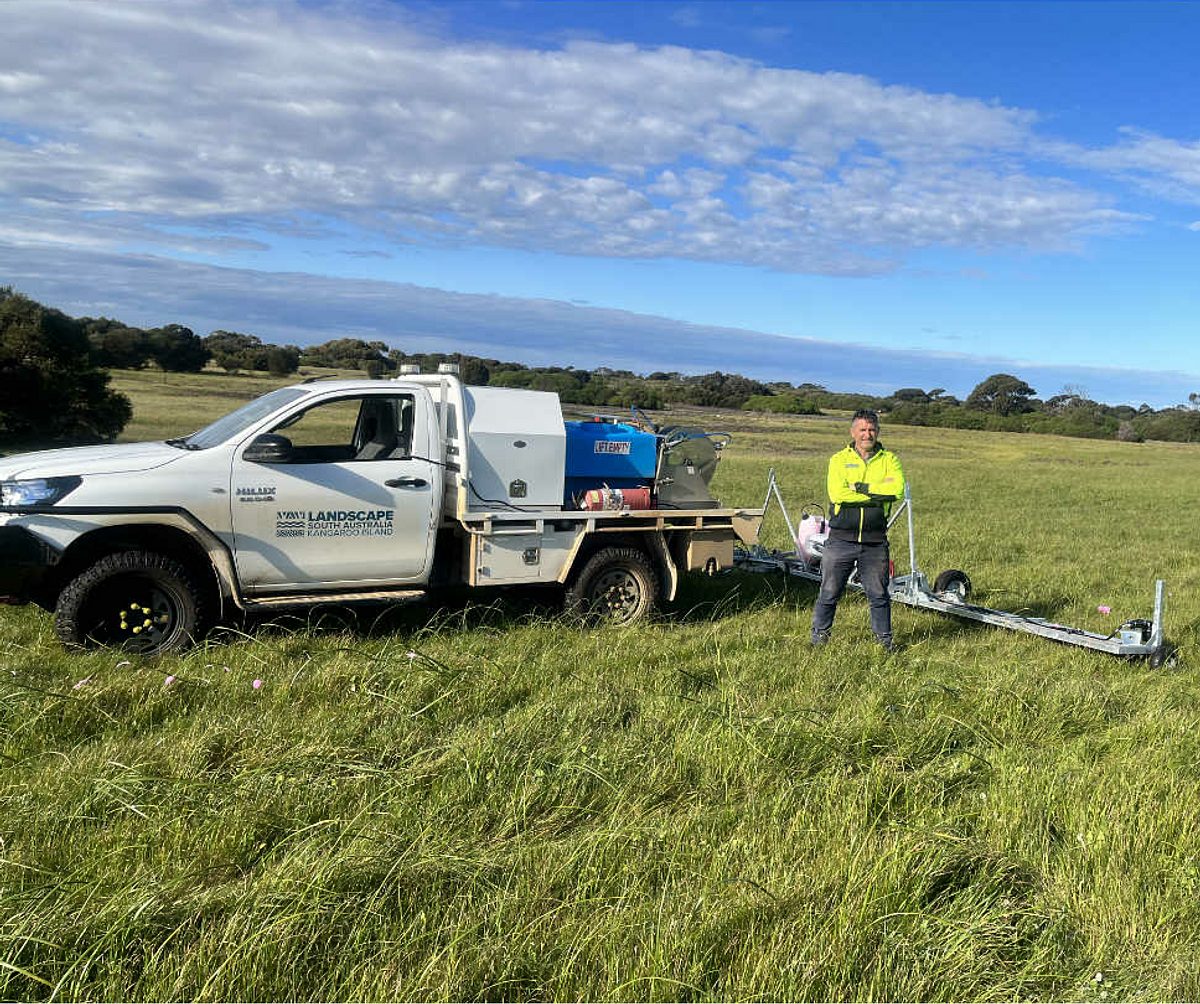Weed wiper tools available for KI landholders
The Kangaroo Island Landscape Board has weed wipers and 12-volt sprayers available for loan to manage one-leaf Cape tulip in pastures and open areas.

The Kangaroo Island Landscape Board's Animal and Plant Control Officer, Jason Walter, is urging landholders to take action against the one-leaf Cape tulip weed on Kangaroo Island following the recent wet weather and as we approach Spring.
"One-leaf Cape tulip is a significant agricultural and environmental weed on Kangaroo Island, and landowners are required to control infestations," Mr Walter said.
"Action needs to be taken now, before it flowers, for the most effective control," he said.
"Weed wipers have proven very effective on KI and are an ideal way of controlling one-leaf Cape tulip in open pastures where landholders do not want to lose valuable feed or cover," Mr Walter said.
"The timing of control is very critical, and herbicides need to be applied before any signs of flowering for a successful bulb kill, usually occurring in July and August," he said.
"The Board also has 12-volt sprayers available for loan that are ideal for spot spraying small inaccessible patches of declared plants before they become a much larger problem."
The plant originated from South Africa and was introduced into Australia as a garden plant around 150 years ago. One-leaf Cape tulip is easily recognised by its strap-like leaf and orange flowers, which appear in early Spring.
"Its seed is spread by wind, water and in produce, with both corms and seed dispersed in contaminated soil or mud by various means, including by farm machinery and stock," Mr Walter said.
"Seed can also be transported in hay cut from infested paddocks, if cut after one-leaf Cape tulip set seeds, which is likely to occur between October and November," he said.
Mr Walter said control of the one-leaf Cape tulip is complicated because the plant can reproduce by seed and corms.
"Larger infestations are best treated with herbicide applied through a weed wiper or a boom sprayer, while individual plants can be hand-wiped or spot-sprayed with herbicide, or physically dug out," Mr Walter said.
"Slashing can be used to suppress seeds if there is no opportunity for chemical or physical control," he said.
"Mature, dry stands with seed heads should not be slashed because of the risk of spreading seeds."
The Kangaroo Island Landscape has a factsheet and control plan for one-leaf Cape tulip on its website, and staff are available to provide landholders with advice on how and when to control one-leaf Cape tulip and other declared weeds.
Mr Walter said that controlling the one-leaf Cape tulip is everyone's responsibility.
"If you don't have this weed on your property, stay vigilant and monitor for new sightings," Mr Walter said.
"If you have emerging infestations, make sure you control them before they get out of hand," he said.
"If you have established infestations, you should prevent spread to adjoining clean paddocks and farms. This might include spraying out buffers along water courses flowing through infested land."
Mr Walter said it is best to work with your neighbours to reduce the spread of the one-leaf Cape tulip.
"If you need advice, please get in touch with us at the Landscape Board. We are here to help."



